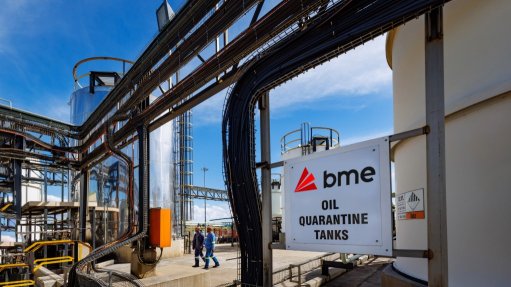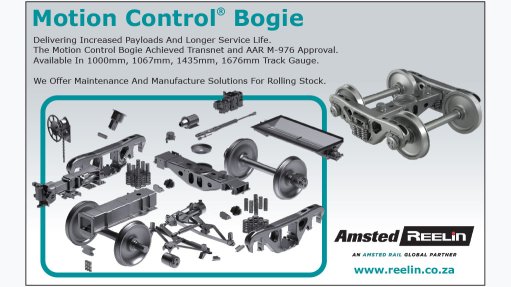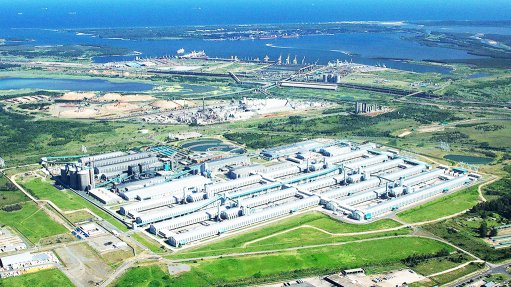Quality of equipment directly impacts safety, efficiency

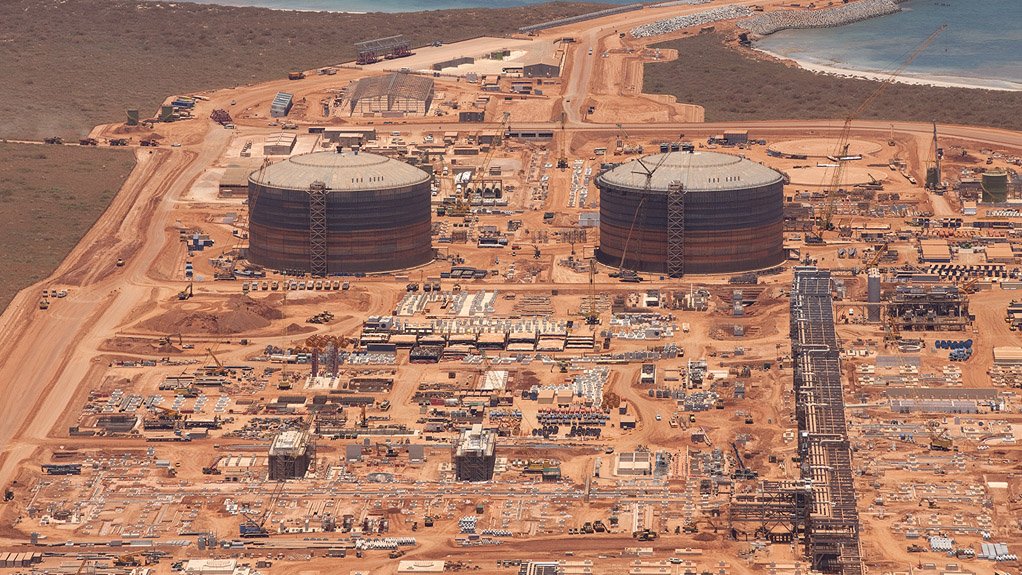
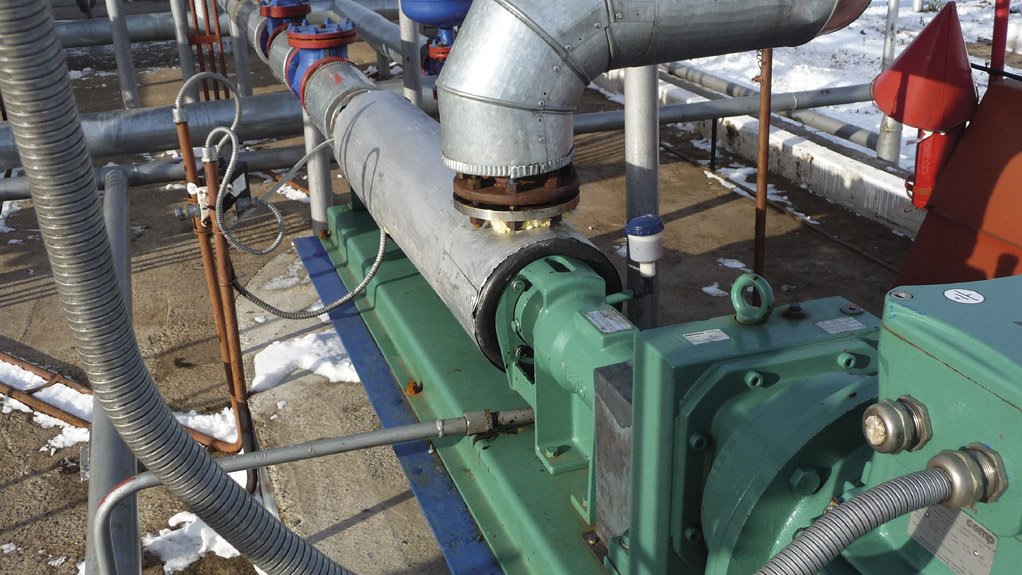
NETZCH'S NICHE Netzsch pumps are frequently used in oil and gas plants, although the company's range also caters for other industrial and mineral applications
SLOW AND STEADY Netzsch pumps operate at a slower speed so fluid particulates do not hit or grind against the inside of the pump with as much force
As the mining industry is supported by a vast system of pumps and pipes, it is important to install pumping equipment that is capable of outlasting its intended job, thereby ensuring safety and efficiency in the mining industry, says displacement pumps manufacturer Netzsch Pumps North America.
“Whether to transport slurries filled with product or to siphon away waste and excess water, pumps surround [mining] operations,” comments Netzsch project manager John Dean. However, he stresses that mined materials are not always soft, safe and easy to handle, and, therefore, a lot of damage can be done to the pumps trying to process these materials, resulting in repair costs and compromised safety.
Dean highlights that mining precious metals or hard minerals can place machines under extreme stress, increasing the chances of mechanical failure, as well as the price of the raw material.
He explains that the sludges and slurries containing these materials are extremely abrasive and can destroy pumping systems in a matter of days. While adding water can make it easier to pump, it also increases the effort required to thicken, concentrate and extract metals and minerals later. “The efficiency, safety and uptime of the pumping systems can be improved by selecting the best pump technology for the application that uses appropriate wear-resistant construction materials,” he notes.
Further, Dean comments that, while pumping and conveyance of abrasive substances can be routine mining practice, it is important to avoid complacency, which can lead to environmental contamination or put workers at risk, by ensuring that all mined substances are properly conveyed and being aware that not all pipes and pumps are capable of the job.
He points out that the most-used pump in the mining industry is a centrifugal pump, which uses a rotating impeller to move water and other fluids. He adds that while this is a convenient way to pump water, fluids containing solids like those encountered in mining operations pose a problem.
Dean explains that the mineral slurries and the fluid pumped during dewatering can cause significant wear on the internal workings of the pump, leading to frequent replacement and extra cost. “The problem with these pumps is that they are composed mostly of hard metal and are capable of high flow rates.”
Usually this characteristic is desired, as the faster a fluid can be pumped, the faster the job is completed. However, Dean notes that, in the case of abrasive fluids and fluids filled with particulates and solids, a faster flow rate only results in the pump throwing solids against its internal metal components harder and faster. This quickly causes significant wear to the pump and can eventually compromise the entire pumping process.
Dean puts forward that when considering dosing applications, centrifugal pumps are not an effective solution because they do not produce a precise flow and can shear fluids, such as flocculants, reducing the efficiency and effectiveness of the dosing process.
He explains that, in many cases, to combat this problem in dosing, positive displacement pumps, such as hose pumps or diaphragm pumps, are used instead. However, while these pumps are better at metering, they have pulsation and the pumps’ components are not designed to deal with damage, costly consequences can ensue. “For instance, if the diaphragm or hose on these pumps breaks, the process fluid can be introduced directly into the atmosphere, resulting in dangerous or expensive leaks,” he notes.
Further, Dean explains, to mitigate these challenges, companies can use pumps with slower operating speeds and more wear-resistant construction materials, For example, Netzsch pumps operate with a slower speed (typically around 100 rpm to 700 rpm), so the particulates in the fluid do not hit or grind against the inside of the pump with as much force as they flow through.
The rotors of the Netzsch pumps turn in a soft elastomer stator. “This creates a sort of pocket cavity for the fluid to pass through, keeping most of the solids in suspension instead of wearing the pump,” Dean illustrates.
When solids do come between the rotor and stator of the pump, the soft elastomer allows the metal rotor to compress the solid particles into the elastomer instead of grinding into them. Then as the rotor turns, the solids are released, re-entering suspension and flowing through the pump. In addition, Dean notes that Netzsch pumps have significantly low pulsation, low vibration and a set volume in their cavities for high performance in metering and dosing.
“Installing pumps such as these greatly increases efficiency and safety. Pumps that incur less wear last longer and require less replacement, allowing companies to save money on spare parts and replacement costs.”
Dean asserts that this reliability also reduces the chances of catastrophic mechanical failure that can put employees at risk. Pumps with slower operating speeds can be operated with smaller motors. Centrifugal setups often require a booster pump and a second pump to achieve some flow conditions such as a suction lift or when both a high flow and high pressure are required, he points out.
Moreover, Dean mentions that in comparison, achieving a slower operating speed can be accomplished using just one progressive cavity pump to pull a suction lift and generate the required pressure or flow all in one pump.
This allows mining companies to cut down on power consumption and the associated cost. Durable and reliable joints and parts combined with the correct materials and construction get the best lifespan out of the pump and its various components.
“Matching the appropriate seals to these more efficient pumps completes the package and ensures the safety of everyone involved. Netzsch pumps can accommodate any type of seal arrangement from a basic level of packing gland to single and double mechanical seals, including seal flush systems for hazardous process fluids,” Dean highlights.
He adds that its seals prevent any dangerous and contaminating leaks and/or loss of product. Extra accessories can further ensure safety by, for example, using pressure switches or release valves in the piping to prevent dangerously high pressures from building up.
Netzsch’s South African branch is located in Honeydew, Johannesburg. Its North African office is located in Algeria.
Article Enquiry
Email Article
Save Article
To advertise email advertising@creamermedia.co.za or click here
Announcements
What's On
Subscribe to improve your user experience...
Option 1 (equivalent of R125 a month):
Receive a weekly copy of Creamer Media's Engineering News & Mining Weekly magazine
(print copy for those in South Africa and e-magazine for those outside of South Africa)
Receive daily email newsletters
Access to full search results
Access archive of magazine back copies
Access to Projects in Progress
Access to ONE Research Report of your choice in PDF format
Option 2 (equivalent of R375 a month):
All benefits from Option 1
PLUS
Access to Creamer Media's Research Channel Africa for ALL Research Reports, in PDF format, on various industrial and mining sectors
including Electricity; Water; Energy Transition; Hydrogen; Roads, Rail and Ports; Coal; Gold; Platinum; Battery Metals; etc.
Already a subscriber?
Forgotten your password?
Receive weekly copy of Creamer Media's Engineering News & Mining Weekly magazine (print copy for those in South Africa and e-magazine for those outside of South Africa)
➕
Recieve daily email newsletters
➕
Access to full search results
➕
Access archive of magazine back copies
➕
Access to Projects in Progress
➕
Access to ONE Research Report of your choice in PDF format
RESEARCH CHANNEL AFRICA
R4500 (equivalent of R375 a month)
SUBSCRIBEAll benefits from Option 1
➕
Access to Creamer Media's Research Channel Africa for ALL Research Reports on various industrial and mining sectors, in PDF format, including on:
Electricity
➕
Water
➕
Energy Transition
➕
Hydrogen
➕
Roads, Rail and Ports
➕
Coal
➕
Gold
➕
Platinum
➕
Battery Metals
➕
etc.
Receive all benefits from Option 1 or Option 2 delivered to numerous people at your company
➕
Multiple User names and Passwords for simultaneous log-ins
➕
Intranet integration access to all in your organisation












